Recent Articles
The Point: a Franco-American Heritage Site in Salem, Massachusetts
Traditional French Songs in Ontario
Fort William, Crossroad of a Fur Trading Empire
The Guigues Elementary School in Ottawa
Centre franco-ontarien de folklore (CFOF)
Centre de recherche en civilisation canadienne-française (CRCCF)
Articles
-
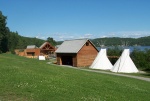
Fort Témiscamingue on Obadjiwan Point: a Place for Meeting and Exchange
The Fort Témiscamingue-Obadjiwan National Historic Site of Canada illustrates the important role the fur trade once had in the Canadian economy. It also testifies to the Franco-British rivalry for control of the fur industry. The industry also played a key role in defining the cultural perception the inhabitants of the Témiscamingue region had of themselves, regardless of whether they were Native Anishinabe (Algonquin) or French or English settlers. The Témiscamingue site has been a centre of human activity for about 6,000 years and various peoples have used it as a meeting place for making exchanges: the Anishinabe; the English and French voyageurs (NOTE 1) who plied the fur trade; as well as the French Canadian settlers of the Témiscamingue region. Today the site is a tourist attraction jointly managed by Parks Canada and the Timiskaming First Nation. This partnership is based on an agreement that is on the verge of being finalized. The objective of the project is to offer visitors a multi-cultural interpretation program.
-
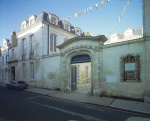
Musée du Nouveau Monde, La Rochelle, France
Housed in a magnificent 18th century private residence, Musée du Nouveau Monde’s collections tell the story of France’s relations with the Americas as conducted from La Rochelle, one of the main ports of New World trade and migration. Paintings, engravings, old maps, sculptures, furniture and decorative art objects conjure up images of Canada, the West Indies, and Brazil as well, with records of the transatlantic slave trade. A section is also devoted to the indigenous peoples of North America and the Far West.
Images
-

Marchand métis tenan
t une fourrure ...Article :
Floral Beadwork: A Métis Cultural Heritage to Rediscover -

Le «capot de chat» es
t associé à l'h...Article :
The Criée des Âmes in L’Islet-sur-Mer -

Richard Robitaille fo
urrureArticle :
Economuseums: Keeping Traditional Crafts and Know-How Alive in French-Speaking Canada -
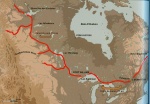
Map showing the trade
routes linking...
-
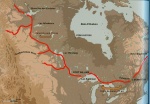
Carte montrant les it
inéraires de tr... -

Sang-mêlé pratiquant
la traite des f... -
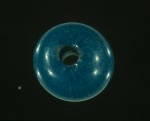
Perle de verre ronde
et de couleur t...Article :
Île aux Basques -

Ours noir
Article :
La Mauricie National Park of Canada
-

Fort Saint-Joseph – C
lochettes fabri...Article :
Reclaiming French Heritage at Fort St. Joseph in Niles, Michigan -

Vestiges d'un foyer e
xhumés sur le s...Article :
Reclaiming French Heritage at Fort St. Joseph in Niles, Michigan
Vidéos
-
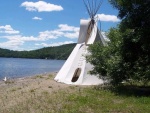
Lieu historique du Fort-Témiscamingue-Obadjiwan
Ce film présente le lieu historique du Fort-Témiscamingue-Obadjiwan, fondé pour le commerce des fourrures à l’époque de la Nouvelle-France et maintenu par les Anglais après 1760. Ce site d’interprétation historique retrace les grandes étapes du Fort-Témiscamingue au sein desquelles les Anglais, les Français et les Amérindiens ont collaboré à la traite. On reconstitue aussi diverses activités reliées à la traite des fourrures, telles que la construction de canots d’écorce. * Durée: 1min29.
Article :
Fort Témiscamingue on Obadjiwan Point: a Place for Meeting and Exchange -

Laliberté
L’entreprise Laliberté, fondée en 1867, est le dernier des grands magasins de la rue Saint-Joseph. Spécialisée dans les produits de fourrures, Laliberté était autrefois ancré dans les activités de transformation de cuir du quartier Saint-Roch. La gestion de l’entreprise est demeurée aux mains de la famille du fondateur pendant trois générations, puis a été ensuite confiée à la famille Morisset qui tient le magasin depuis maintenant trois générations. Jacques et Lucie Morisset, le père et la fille propriétaires du magasin, ont été rencontrés. Laliberté a su s’adapter en restructurant et en diversifiant ses activités tout en conservant ses productions liées à la fourrure qui sont liées à ses origines.
Documents PDF
-
Contrat d'avitaillement pour le navire la Marie de Saint-Vincent (Ciboure) 30 avril 1586
Avitaillement pour le navire la Marie de Saint-Vincent (Ciboure) destiné à Terre-Neuve et au Canada (Gaspé) pour la pêche à la morue, la chasse à la baleine et la traite des fourrures (document conservé aux Archives départementales de la Gironde, Bordeaux, France, 3E 5427, fos. 265v-267r (30 avril 1586). Taille: 347 Kb
Article :
Île aux Basques -
Transcription du contrat d'avitaillement pour le navire la Marie de Saint-Vincent (Ciboure) 1er avril 1586
Transcription intégrale d’un contrat pour l’avitaillement du navire la Marie de Saint-Vincent (Ciboure) pour la chasse à la baleine et la traite des fourrures avec les « sauvaiges » à la « grande baye » (estuaire du Saint-Laurent) (document conservé aux Archives départementales de la Gironde, Bordeaux, France, 3E 5420, fos. 551v-552r, 1er avril 1586). Taille: 41 Kb
Article :
Île aux Basques

